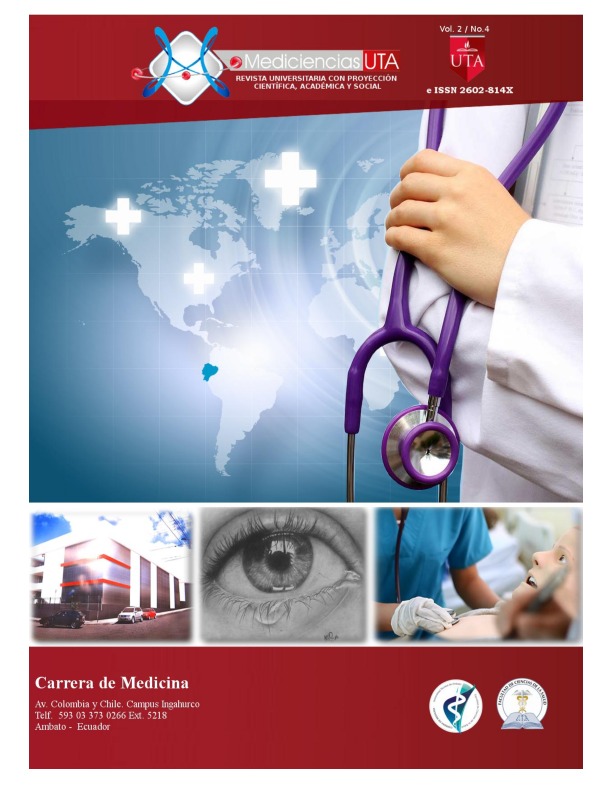PrevalenceofoverweightandobesityinpatientswithcholelithiasisreferredtotheuniversityHospitalofGuayaquil
Main Article Content
Abstract
Introduction:Biliary lithiasis is a common pathology within the diseases of the digestive system, with multifactorial etiology. Constitutional or unmodifiable risk factors (female gender, age, genetics) and environmental or modifiable risk factors (obesity, diet, hyperlipidemia, weight loss) participate in litogénesis. It is considered a public health problem; More than 80% of the calculations are made up of cholesterol. Its treatment corresponds to cholecystectomy, with laparoscopy being the procedure of choice. It constitutes the second pathology of attention in the outpatient surgery of the university Hospital of Guayaquil.
Objective:To estimate theprevalence of cholelithiasis in overweight and obese patients attended at the university Hospital of Guayaquil and to identify whether there is association between them and influencing factors such as age and sex.
Material and methods: A retrospective descriptive investigation was conducted from January to September 2016, reviewing 1,756 clinical histories, which corresponded to all patients referred with diagnosis of cholelithiasis to the external consultation of General surgery of the University Hospitalof Guayaquil, of the Ministry of Public Health of Ecuador, selecting 1,730 clinical Histories, by having complete the data of interest for the study. Age, sex, and body mass index (BMI), obtained through formula: Weight Kg/Size (m2) were identified. The classification of the nutritional status was established according to the values determined by the World Health Organization according to BMI: low weight a lower value 18.5; Normal weight from 18.5 to 24.9; Overweight 25 to 29.9 and obesity greater than or equal to 30. Statistical analysis was performed by descriptive methods, based on averages and standard deviations for quantitative variables, and percentages for qualitative variables. Statistical validation was performed using Chi-squared models. Through the calculation of Odds Ratio was determined existence of association and risk, with a confidence interval of 95, considering a value of p less than 0.05 as statistically significant. For data processing and statistical analysis, the IBM Microsoft Excel 2013 and SPSS version 22 programs were used..
Results:Overweight and obesity amounted to 64% of cases. Obesity and cholelithiasis was higher for the female sex (p = 0.005). Significant association was found in patients with obesity and cholelithiasis in the group of more than 40 years. (p = 0.000).
Conclusions:Overweight and obesity have a high prevalence in patients with cholelithiasis, especially if they are women and older than 40 years.



